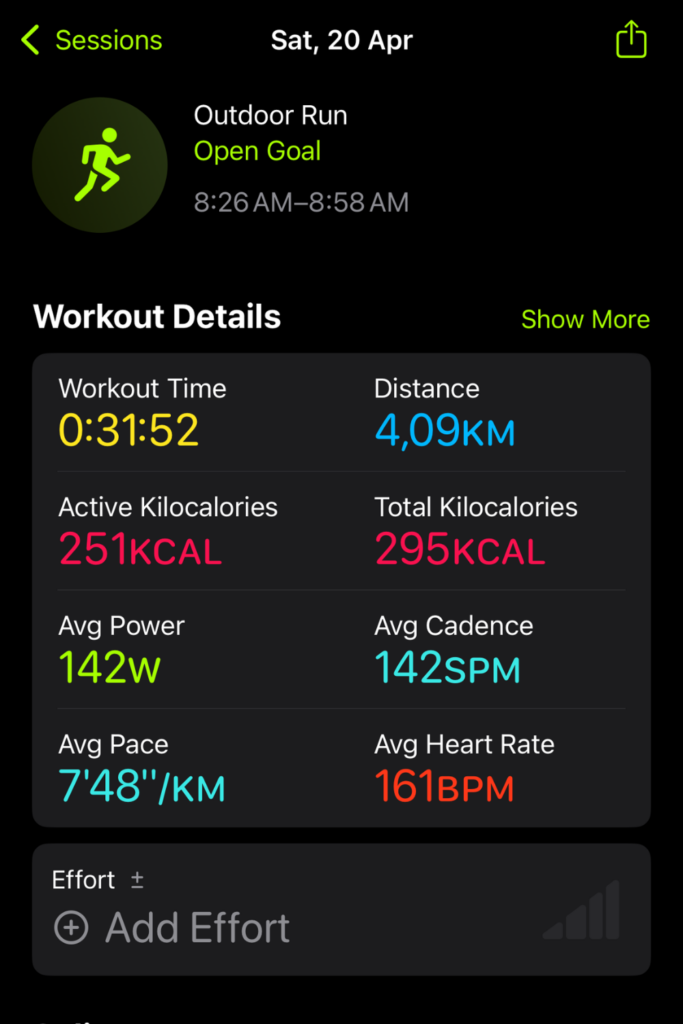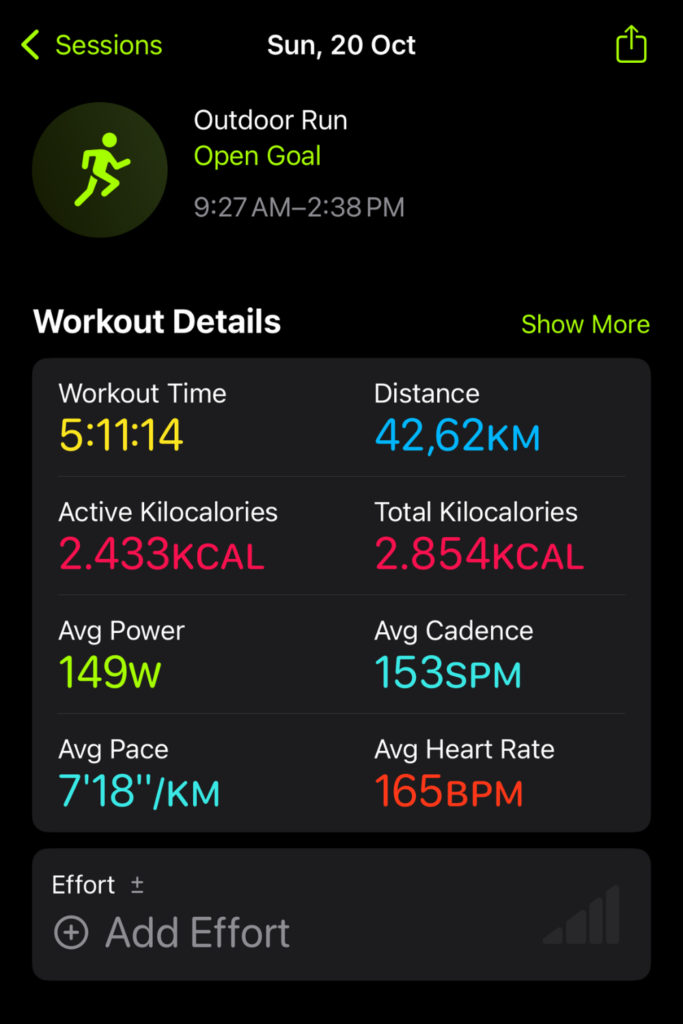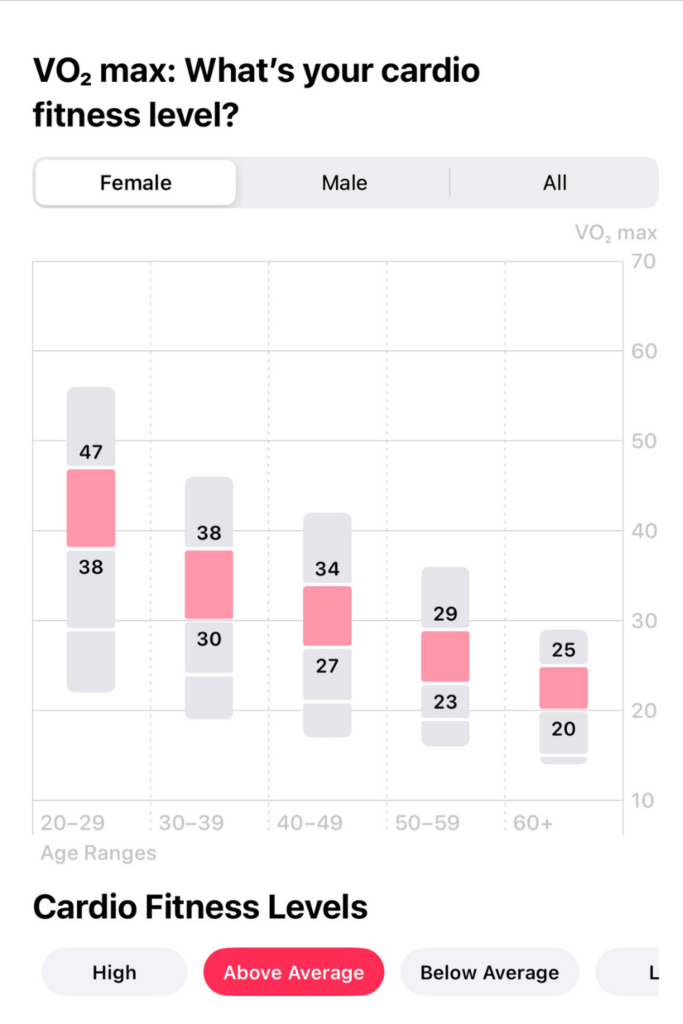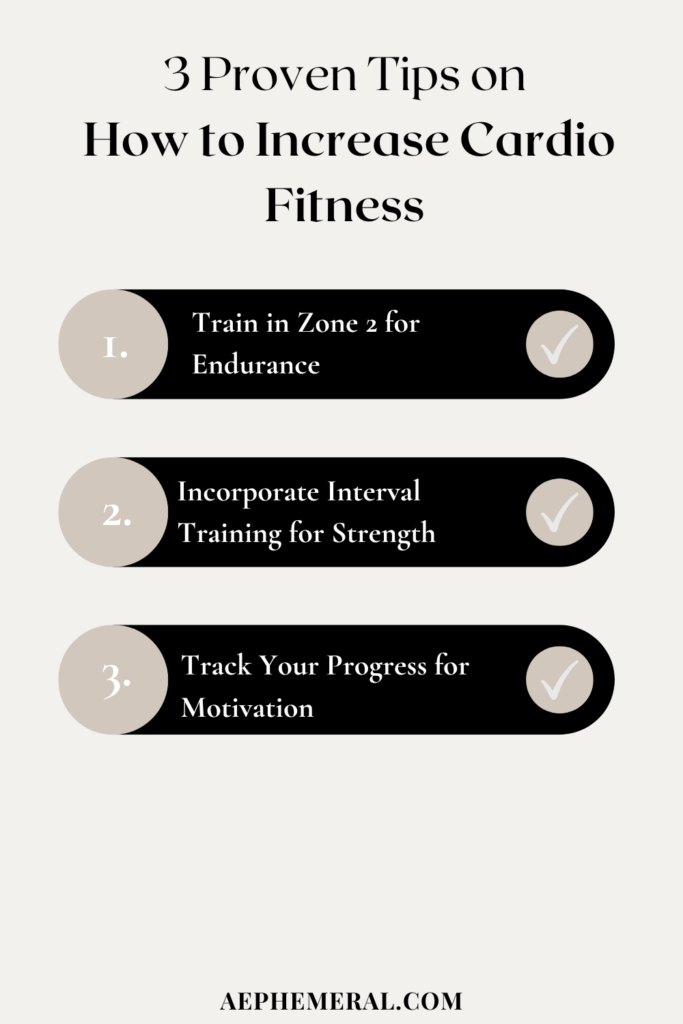I used to think cardio fitness was only for athletes or people who loved running. For me, it felt out of reach. But once I learned how to increase cardio fitness, I realised it wasn’t about being naturally good at it—it was about starting small and staying consistent.
At first, I made a lot of mistakes. I pushed too hard, ran too fast, and thought I needed to exhaust myself to see progress. Over time, I figured out that smart training, patience, and tracking progress were the real keys to improving. Once I understood how to increase cardio fitness, everything started to fall into place.
In this post, I’ll share how to increase cardio fitness by taking you through my personal experience, breaking down what VO2 max is and why it’s important, and offering 3 practical tips to help you build your endurance step by step.
How to Increase Cardio Fitness: My Journey from Beginner to Marathoner
I’ve never been athletic. Running always felt like something other people did. For me? Impossible. But somewhere deep down, I felt this pull to start running. There’s something about it—this feeling of freedom, of just moving forward with nothing holding you back. It felt out of reach for me, though. Running wasn’t my thing, let alone running a marathon.
When I started running, I had already been strength training in the gym for almost a year. I loved the gym, but I started to feel this itch to try something new. I wanted to push my body differently, to see what I was capable of. That’s when the idea of running a marathon came into my head. A full 42.2 kilometers. Honestly, it felt ridiculous. Who does that?
That’s when the real challenge started. I had six months to train and figure out how to increase cardio fitness enough to finish a marathon. At first, it felt impossible. I wasn’t a runner, but I was determined to build my endurance step by step.
I’ll be sharing a separate post with the full story of my marathon journey, so keep an eye out for that!


Spoiler alert: I did it. I successfully increased my cardio fitness and ran the marathon in a ridiculous 5 hours and 11 minutes. It wasn’t perfect, it wasn’t fast, but it was mine. Crossing that finish line was proof that six months of hard work, consistency, and trust in the process paid off.
In the first picture, you can see one of my very first runs—just over 4 kilometers with a 7:48 pace and a 161 bpm heart rate. Now compare that to the marathon day stats in the second picture: 42.2 kilometers at a 7:18 pace and a 165 bpm heart rate.
The progress is clear, but it’s more than just numbers. It’s a reflection of pushing past doubt, training smarter, and proving to myself that I was capable of more than I ever imagined.
What Is VO2 Max?
VO2 max is a measure of how well your body uses oxygen during exercise. In simple terms, it shows how much oxygen your heart and muscles can process while you’re working out. The higher your VO2 max, the better your endurance and overall fitness.
Why is it important? VO2 max is a key factor in determining your cardiovascular fitness. If you’re looking for how to increase cardio fitness, improving your VO2 max should be one of your goals. A higher VO2 max means your body can handle longer or more intense workouts, recover faster, and become more efficient over time.
The best part? VO2 max isn’t fixed—it can be improved. Activities like running, cycling, and swimming are excellent ways to increase it. Adding interval training or Zone 2 cardio to your routine is also highly effective for building endurance and boosting your VO2 max.
When you’re figuring out how to increase cardio fitness, understanding VO2 max gives you a measurable way to track your progress. It’s not just a number—it’s a reflection of your body’s ability to grow stronger and more efficient with consistent effort.
What Is a Good VO2 Max for Women?
A “good” VO2 max for women depends on factors like age and fitness level. The chart below, sourced from Apple Health, shows general VO2 max ranges for women by age group. For women in their 20s, a VO2 max of 38–47 ml/kg/min is considered above average, while for women in their 30s, the range shifts slightly to 30–38 ml/kg/min.
If you’re wondering how to increase cardio fitness, improving your VO2 max is one way to track progress. It’s important to note that while this chart offers benchmarks, your starting point is unique to you. The goal isn’t to compare yourself to others but to focus on consistently improving your own numbers through activities like running, cycling, or Zone 2 cardio.
By tracking changes in your VO2 max over time, you can measure how your cardio fitness is improving and set realistic goals for better endurance and overall health.
3 Proven Tips on How to Increase Cardio Fitness
Improving your cardio fitness doesn’t have to be complicated. It’s about consistency, understanding your body, and finding a routine that works for you. If you’re wondering how to increase cardio fitness, here are 3 proven tips that helped me build my endurance and, eventually, cross the marathon finish line!
1. Train in Zone 2 for Endurance
Zone 2 cardio is the foundation of endurance training. It’s where you work at a steady, moderate intensity—your heart rate is elevated, but you can still hold a conversation without gasping for air. This is where your body gets better at using oxygen and burns fat efficiently, making it ideal for beginners and anyone looking to build their aerobic base or figure out how to increase cardio fitness.
The beauty of Zone 2 is that it’s sustainable. You’re not crushing yourself in every session, but you’re still making meaningful progress. Examples of Zone 2 workouts include brisk walking, light jogging, or cycling at a steady pace. For me, incorporating Zone 2 cardio into my training was a game-changer. It allowed me to increase my endurance without feeling burnt out, and over time, I saw my pace improve naturally.
Consistency is key here. Training in Zone 2 a few times a week helps you build a strong foundation for more intense workouts down the road. So, if you’re wondering how to increase cardio fitness, start with Zone 2—it’s where steady effort leads to sustainable results.
2. Incorporate Interval Training for Strength
Once you’ve built a solid base with Zone 2, it’s time to introduce interval training. This involves alternating between periods of high-intensity effort and low-intensity recovery. It’s like giving your heart and lungs a workout sprint, followed by a chance to catch their breath. Interval training is incredibly effective for improving stamina, speed, and cardiovascular strength, making it a key strategy for anyone learning how to increase cardio fitness.
A simple example for beginners is running fast for 1 minute, then walking for 2 minutes. Repeat this cycle for 20–30 minutes. The high-intensity intervals push your limits, while the recovery periods help you reset and prepare for the next effort.
For me, incorporating intervals into my running routine was tough but rewarding. It taught me how to control my breathing and push through discomfort, which made longer runs feel easier over time. If you’re serious about how to increase cardio fitness, intervals are a must—they bring results quickly and keep your workouts interesting.
3. Track Your Progress for Motivation
Tracking your progress is more than just numbers—it’s a powerful motivator. Whether it’s your pace, heart rate, or VO2 max, seeing tangible improvements over time can keep you going. I remember looking back at my Apple Fitness stats and realizing just how far I’d come. What started as a 4 km run at a 7:48 pace turned into a marathon at a 7:18 pace six months later.
Start small. Use a fitness app, smartwatch, or even a notebook to log your workouts. Celebrate the small wins—your first 5K, shaving seconds off your pace, or even just feeling less out of breath on a run. Progress doesn’t always look like huge leaps; it’s the accumulation of consistent effort over time.
For me, tracking my stats kept me motivated, especially on days when I felt like I wasn’t improving. Every small gain reminded me that I was moving in the right direction. If you want to know how to increase cardio fitness, don’t just focus on the finish line—focus on the journey and the milestones along the way.
These 3 tips—training in Zone 2, incorporating intervals, and tracking progress—are simple but incredibly effective. Stick with them, stay consistent, and you’ll be amazed at how much your cardio fitness improves over time.
This post was all about How to Increase Cardio Fitness!
About Aephemeral: Aephemeral is a space for women who strive to become the best version of themselves. Here, you’ll find tips, insights, and actionable advice on fitness, nutrition, and personal growth. By joining our community, you’ll gain exclusive benefits and resources tailored to empower you on your journey. Start building the life you deserve—one step at a time.
Learn more about me and the story behind Aephemeral. Together, let’s build the confidence, discipline, and habits needed to achieve your goals!






